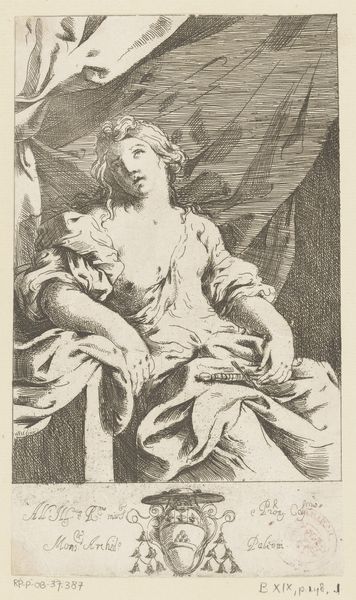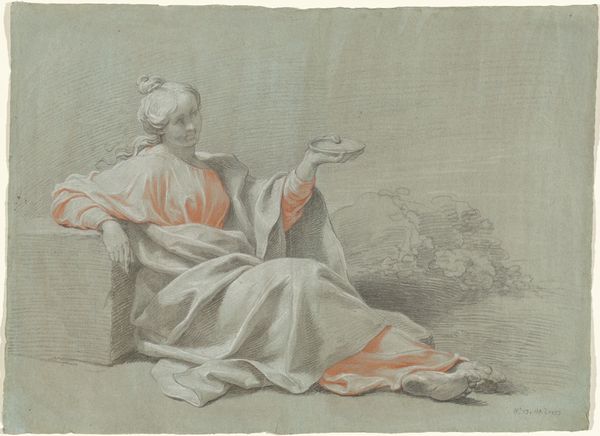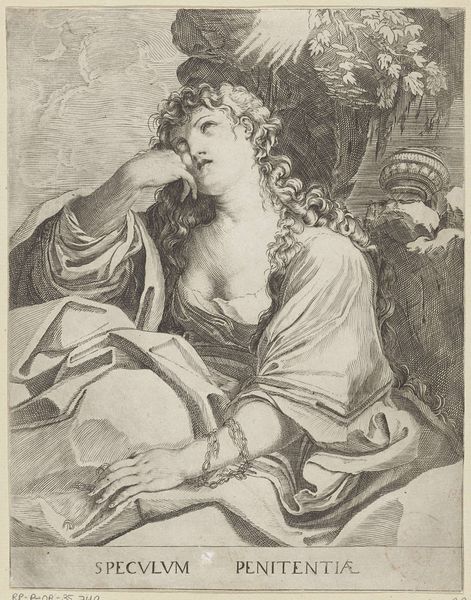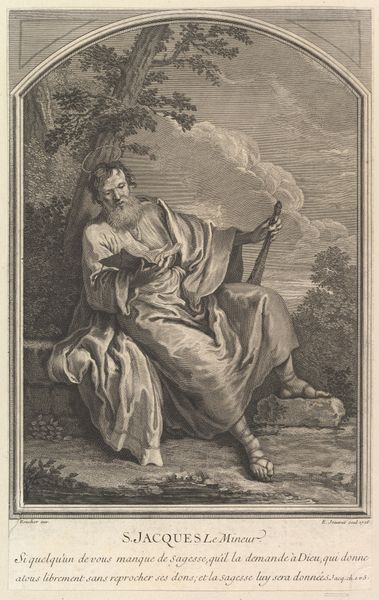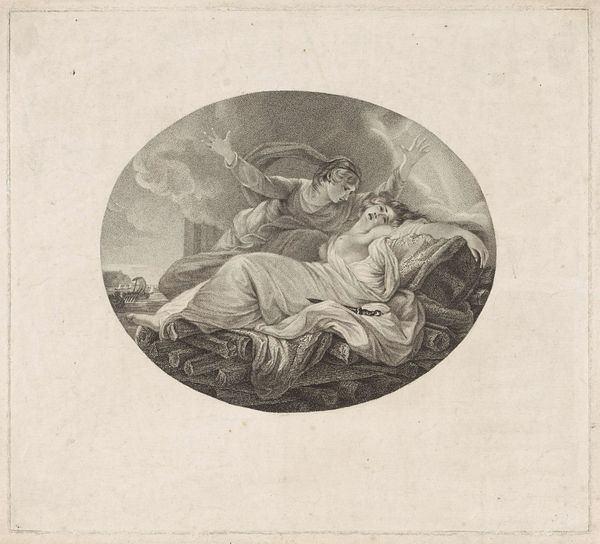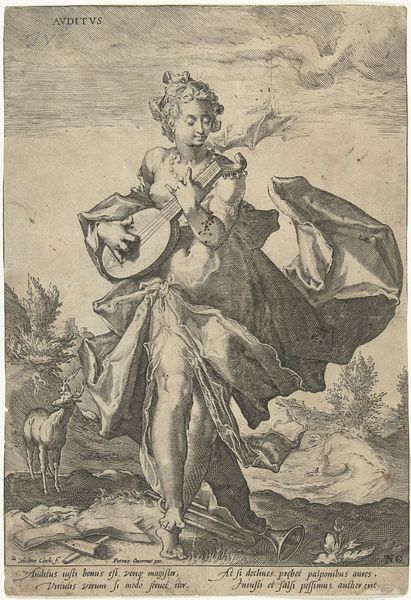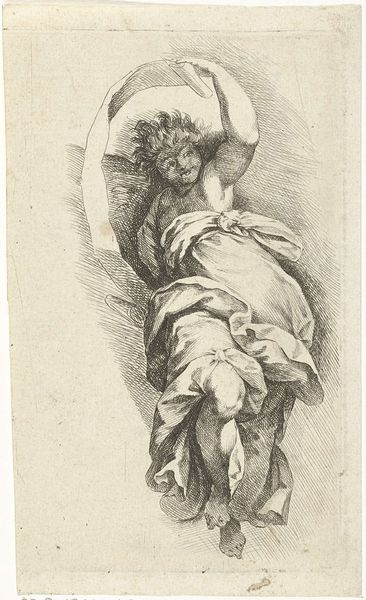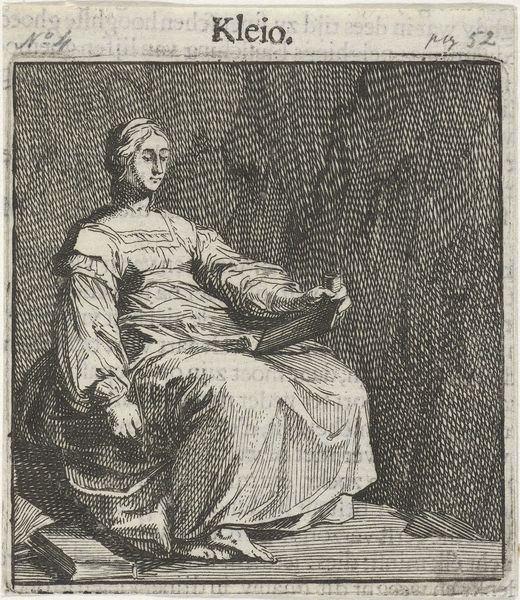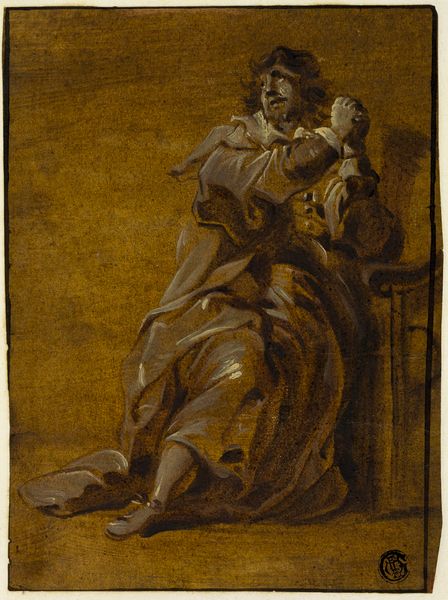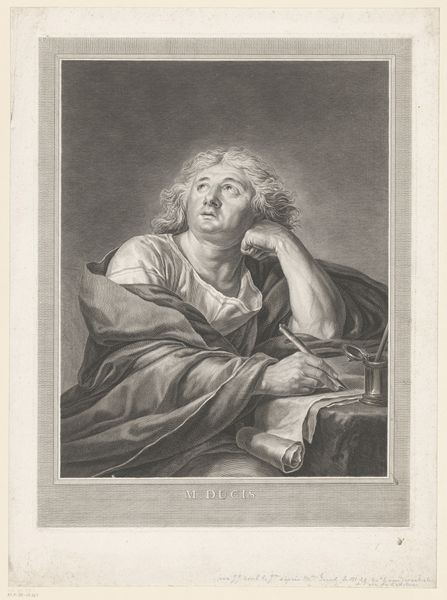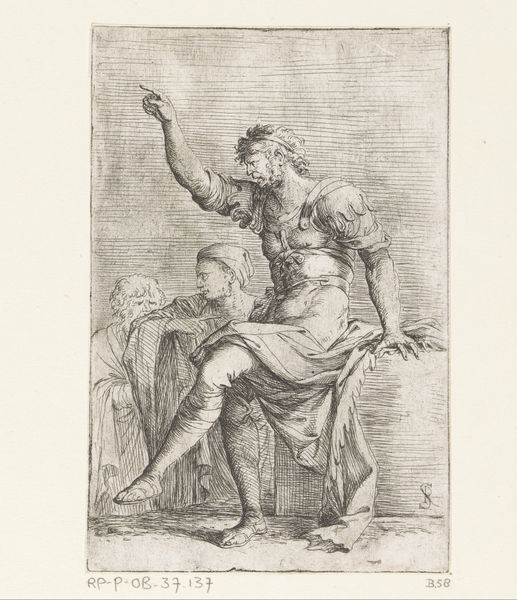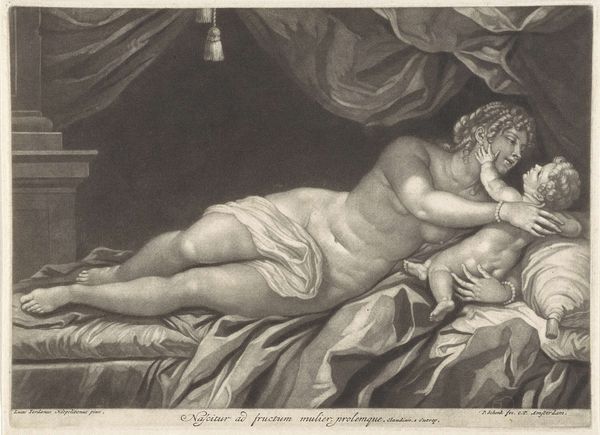
Dimensions: height 171 mm, width 206 mm
Copyright: Rijks Museum: Open Domain
Curator: There's something ethereal about this anonymous print, dating from between 1751 and 1801, entitled "Detail van de kroning van Maria"—Detail of the Coronation of Mary. The medium is engraving. Editor: Immediately, I'm struck by the sheer volume and texture achieved with just lines. It looks incredibly labor-intensive. You can almost feel the fabric. Curator: Precisely. Think about the coronation theme; Mary ascends, often amidst billowing fabrics and angelic hosts. This detailed engraving distills that ascent. Note the hand gestures – one reaching upward, almost in supplication, the other resting on her breast, a classic sign of humility and acceptance. Editor: The sheer amount of tiny, uniform marks across the print is astounding. How long did this engraving take? I wonder about the economic status of the people acquiring works like this – was it a way to replicate expensive paintings more accessibly? Curator: It speaks to accessibility, definitely. Prints allowed wider dissemination of religious iconography. But look closer. The crown isn't explicit; the suggestion of ascent is the core symbol here. It's less about literal coronation, and more about divine embrace, signified through her pose and the fabric's movement. Editor: But the fabric *is* the artwork for me. I imagine the engraver meticulously studying and copying folds, patterns, the play of light, and dark across a material object. That devotion to depicting the tactile quality of fabric says something significant about the relationship to luxury goods at this historical moment. Curator: And it certainly anchors her divinity in the physical world, giving believers something tangible to connect with spiritually. Consider also the artistic influences—undoubtedly drawing from the established Baroque traditions of the period, with its characteristic drama and intensity of feeling. Editor: A devotional object through the careful, almost obsessive treatment of humble materials like ink and paper. I suppose the religious narratives add cultural weight, but the tangible is what endures, doesn’t it? Curator: Yes, perhaps the skill and craft transform base material into an enduring spiritual symbol. Editor: Right, giving a unique angle into a grand historical event, using those very same traditional materials, just with such an extraordinary eye for process and labor.
Comments
No comments
Be the first to comment and join the conversation on the ultimate creative platform.
